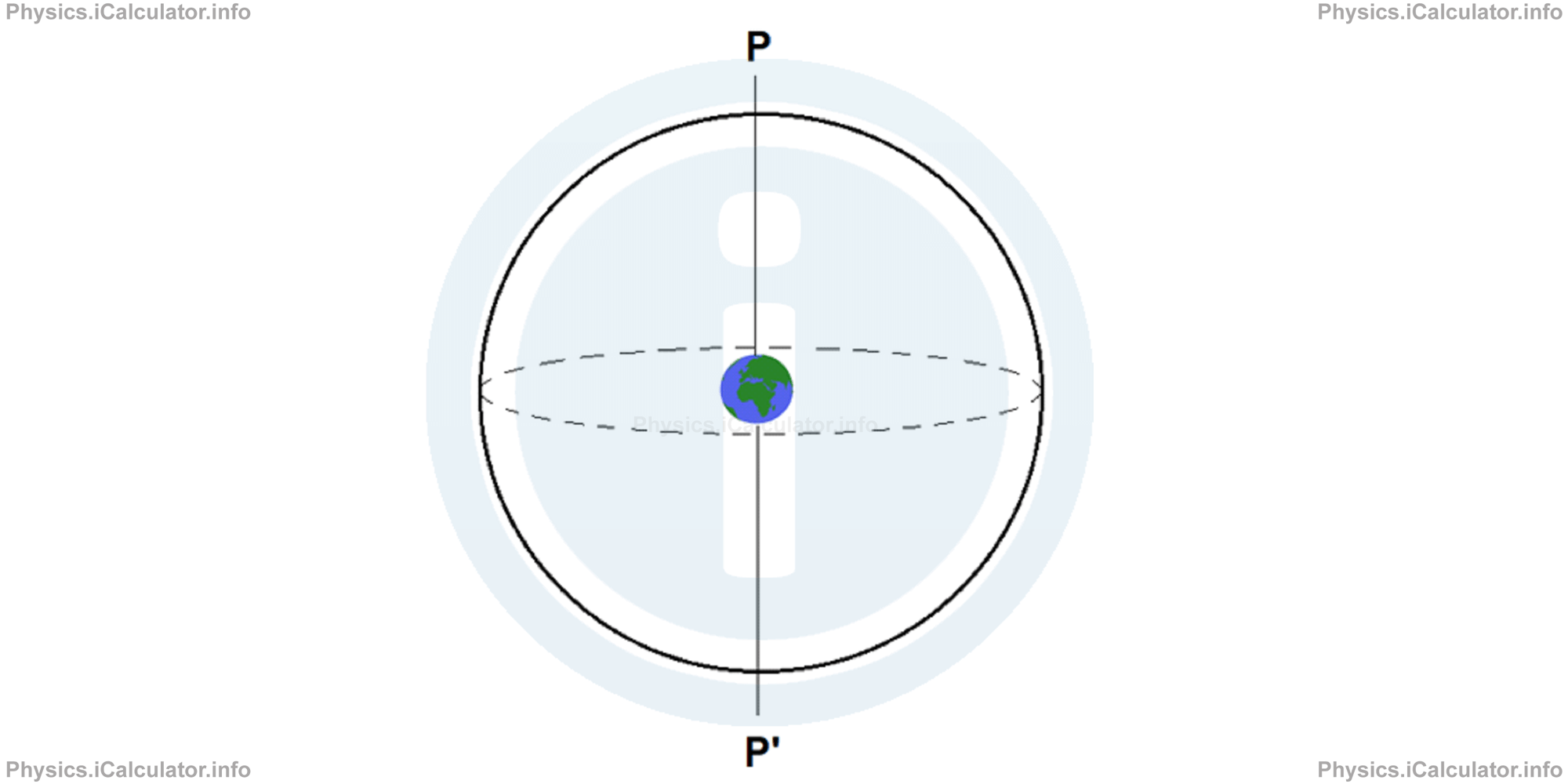Menu
Physics Lesson 22.8.1 - Orientation in the Sky
Please provide a rating, it takes seconds and helps us to keep this resource free for all to use
Welcome to our Physics lesson on Orientation in the Sky, this is the first lesson of our suite of physics lessons covering the topic of Orientation in the Sky and Constellations, you can find links to the other lessons within this tutorial and access additional physics learning resources below this lesson.
Orientation in the Sky
When we study the movement of celestial bodies in the sky for orientation purpose, we are not interested in their distance from Earth but only for their position at a certain period of year. This is because the sky offers a 2 dimensional view to us; our eyes are unable to perceive the dimension of depth when looking at it. Therefore, knowing the distance of a celestial body from Earth would be a useless information when looking at the sky for orientation purposes. Hence, for convenience we can show the position of celestial bodies in 2 coordinates, just like the position of any point on the surface of a sphere. We consider the sky as a very large sphere where all stars lie on its surfaces and Earth is located at centre of this sphere, as shown in the figure below.

From the classical astronomy viewpoint, the figure shows a big sphere known as a celestial sphere, a line PP' collinear to Earth axis, the equator of celestial sphere (shown with dashed line) and the Earth located at centre of sphere. All celestial bodies lie on the surface of celestial sphere. In other words, celestial sphere is an abstract sphere that has an arbitrarily large radius and is concentric to Earth. All objects in the sky can be conceived as being projected upon the inner surface of the celestial sphere, which may be centered on Earth or the observer. The concept of celestial sphere is mainly used in astronomy and navigation,
There are two questions derived from this approach. First, can we neglect the dimension of Earth when taking it at centre of celestial sphere and second, can we neglect the dimensions of Earth's orbit when using this approach?
The answer is affirmative for both questions. The Earth is so small compared to the dimensions of the celestial sphere that we consider it as just a point at middle of this sphere. The figure above shows an exaggerated size of Earth; it must appear just like a small point at the centre of the sphere.
We know that Earth rotates around its axis from West to East. Hence, we assume the celestial sphere is rotating from East to West, as everything in the celestial sphere is considered from our point of view. Sunrise, moonrise, sunset, moonset, etc., all occur at specific periods of the day. In this type of "motion", the stars do not change their positions in respect of each other. The celestial sphere rotates from East to West like a single body. The imaginary axis PP' of this rotation is collinear to Earth's self-rotation axis. For people living in North hemisphere of Earth (about 90% of world population) the imaginary axis of celestial sphere "punches" the celestial sphere near a very bright star known as the Pole Star (or Polaris). This star is part of the Ursa Minor constellation, which we cover later in this tutorial.
The rotation axis PP' of the celestial sphere is known as the "world axis"; the points where this axis punch the celestial sphere are known as "world poles", namely north and south pole. Stars perform a circular motion during the rotation of the celestial sphere. The perpendicular plane to world axis is called the equatorial plane. Its intersection with the celestial sphere is called celestial equator.
You have reached the end of Physics lesson 22.8.1 Orientation in the Sky. There are 8 lessons in this physics tutorial covering Orientation in the Sky and Constellations, you can access all the lessons from this tutorial below.
More Orientation in the Sky and Constellations Lessons and Learning Resources
Whats next?
Enjoy the "Orientation in the Sky" physics lesson? People who liked the "Orientation in the Sky and Constellations lesson found the following resources useful:
- Orientation Feedback. Helps other - Leave a rating for this orientation (see below)
- Cosmology Physics tutorial: Orientation in the Sky and Constellations. Read the Orientation in the Sky and Constellations physics tutorial and build your physics knowledge of Cosmology
- Cosmology Revision Notes: Orientation in the Sky and Constellations. Print the notes so you can revise the key points covered in the physics tutorial for Orientation in the Sky and Constellations
- Cosmology Practice Questions: Orientation in the Sky and Constellations. Test and improve your knowledge of Orientation in the Sky and Constellations with example questins and answers
- Check your calculations for Cosmology questions with our excellent Cosmology calculators which contain full equations and calculations clearly displayed line by line. See the Cosmology Calculators by iCalculator™ below.
- Continuing learning cosmology - read our next physics tutorial: Expansion of the Universe
Help others Learning Physics just like you
Please provide a rating, it takes seconds and helps us to keep this resource free for all to use
We hope you found this Physics lesson "Orientation in the Sky and Constellations" useful. If you did it would be great if you could spare the time to rate this physics lesson (simply click on the number of stars that match your assessment of this physics learning aide) and/or share on social media, this helps us identify popular tutorials and calculators and expand our free learning resources to support our users around the world have free access to expand their knowledge of physics and other disciplines.